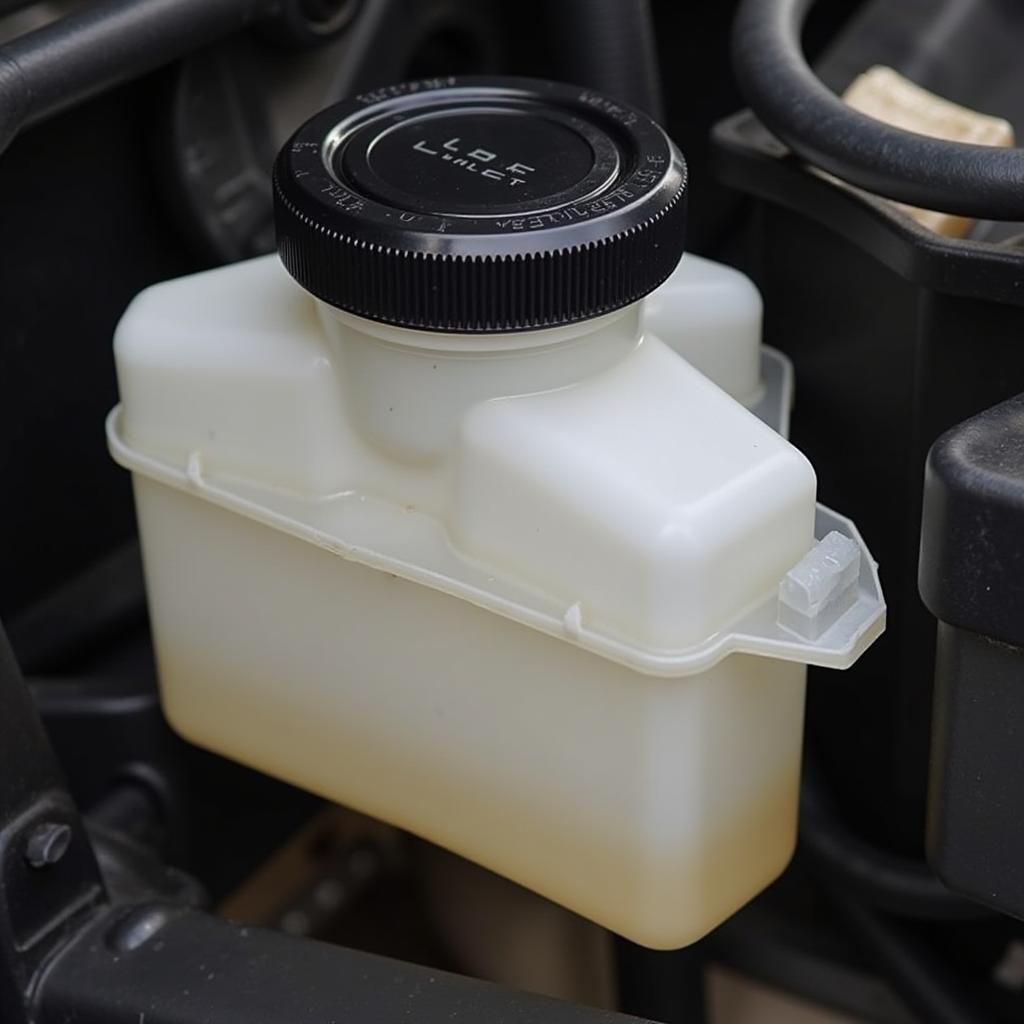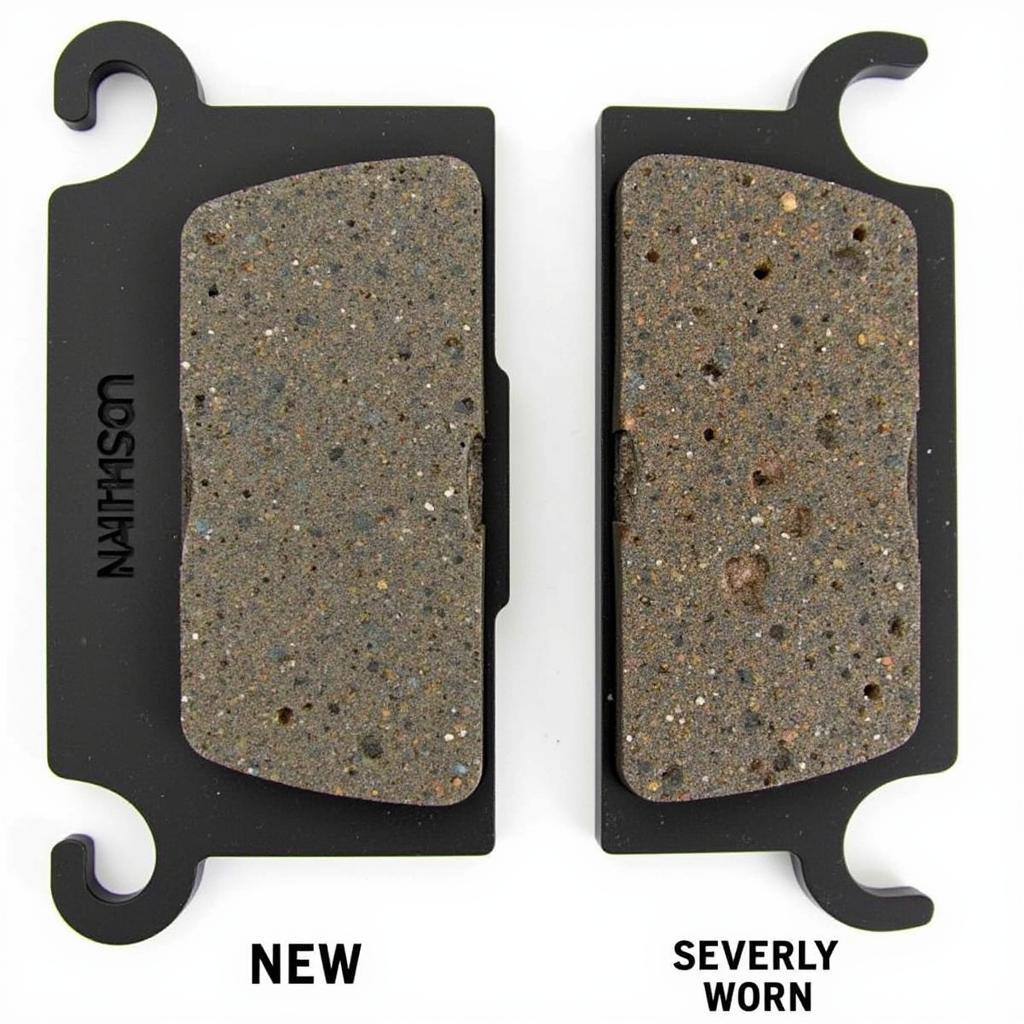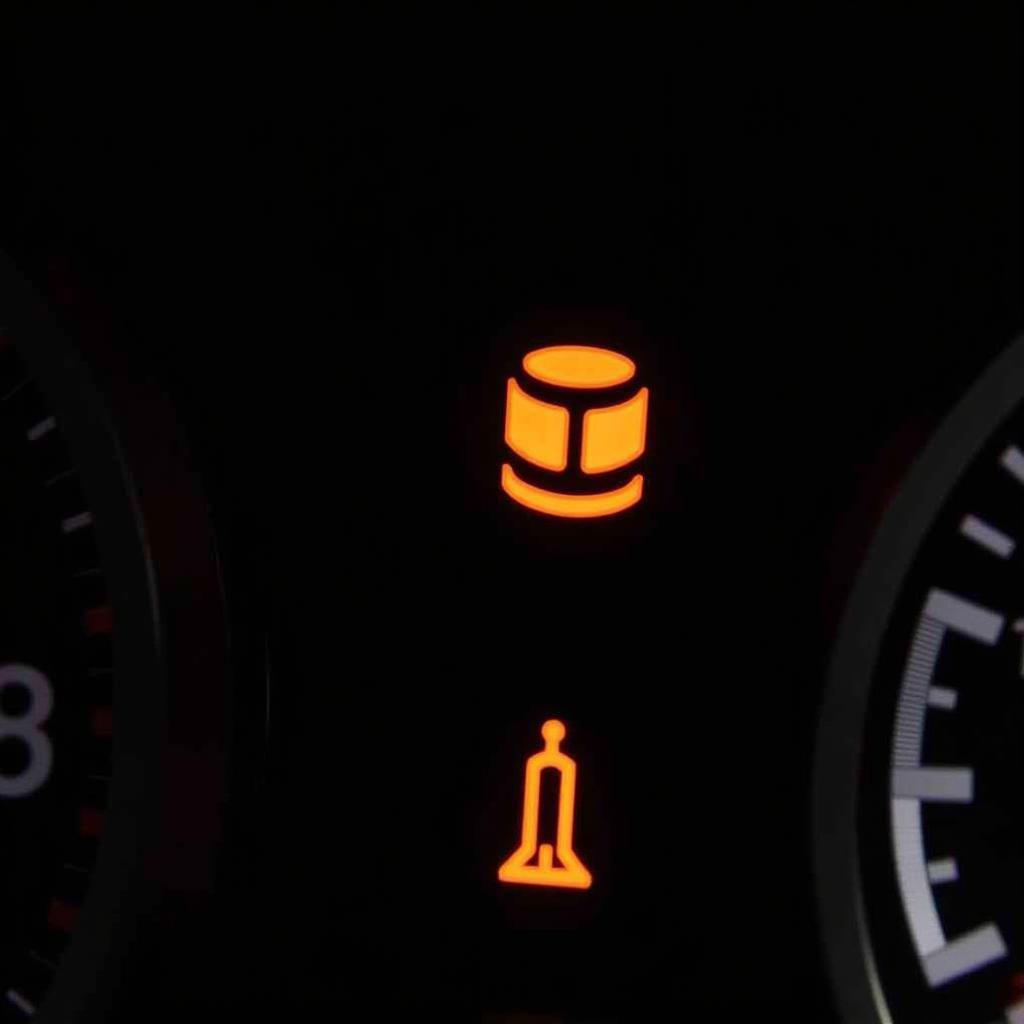The brake warning light on your dashboard is a crucial safety feature in your 20005 Ford F150. When illuminated, it signals a potential issue within your braking system that requires immediate attention. Ignoring this warning could lead to reduced braking performance and increase the risk of an accident. While the issue might seem daunting, this comprehensive guide will help you understand the common causes behind the 20005 Ford F150 brake warning light and provide potential solutions.
Understanding Your Ford F150’s Brake System
Before delving into the causes, it’s helpful to understand the basic components of your F150’s braking system. This intricate network works together to slow down and stop your vehicle:
- Brake Pedal: Applying pressure to the pedal activates the entire braking system.
- Brake Booster: This component amplifies the force you apply to the brake pedal, making braking easier.
- Master Cylinder: This vital component converts the mechanical force from the pedal into hydraulic pressure.
- Brake Lines: These metal tubes carry the pressurized brake fluid to each wheel.
- Brake Calipers & Wheel Cylinders: These components house the brake pads and shoes, respectively, which clamp down on the rotors or drums to create friction and slow the vehicle.
- Brake Fluid: This specialized fluid transmits the hydraulic pressure throughout the system.
Common Causes of the 20005 Ford F150 Brake Warning Light
There are several reasons why the brake warning light on your 20005 Ford F150 might illuminate. Some are simple fixes, while others require professional attention.
1. Low Brake Fluid Level
Why it matters: Brake fluid is the lifeblood of your braking system. As the fluid level drops, often due to leaks or worn brake pads, the system’s effectiveness diminishes.
Solution: Park your truck on a level surface and inspect the brake fluid reservoir under the hood. If the fluid level is below the “MIN” mark, add the recommended brake fluid type for your F150. However, simply adding fluid doesn’t address the root cause. It’s crucial to identify and repair any leaks in the brake lines, calipers, or wheel cylinders.
 Ford F150 Low Brake Fluid
Ford F150 Low Brake Fluid
2. Worn Brake Pads
Why it matters: Brake pads are designed to wear down over time. When they become too thin, the brake warning light activates as a safety precaution.
Solution: Inspect your brake pads by looking through the spaces between the wheel spokes. If the pad material is less than 1/4 inch thick, it’s time for a replacement. Consider replacing all four brake pads simultaneously, even if only one set is worn, to ensure even braking performance.
 Worn Brake Pads on a Ford F150
Worn Brake Pads on a Ford F150
3. Faulty Brake Light Switch
Why it matters: The brake light switch is a small but vital component that activates your brake lights when you press the pedal. A malfunctioning switch can trigger the brake warning light.
Solution: Locate the brake light switch, typically mounted above the brake pedal arm. A visual inspection might reveal damage or misalignment. If the switch appears physically sound, testing it with a multimeter can determine if it’s functioning correctly. Replacing a faulty brake light switch is a relatively straightforward task.
4. ABS System Malfunction
Why it matters: Your F150’s Anti-lock Braking System (ABS) prevents wheel lockup during hard braking, enhancing vehicle control. When the ABS module detects a fault, it illuminates the brake warning light.
Solution: Diagnosing an ABS issue often requires specialized diagnostic equipment. If you suspect an ABS malfunction, it’s best to consult a qualified mechanic or dealership. They can retrieve trouble codes from the ABS module, pinpointing the specific problem area.
5. Emergency Brake Engaged
Why it matters: While seemingly obvious, forgetting to disengage the parking brake (or emergency brake) is a surprisingly common reason for the brake warning light to come on.
Solution: Before panicking, ensure your parking brake is fully released. Sometimes, the brake handle might seem disengaged, but the mechanism might still be partially engaged.
When to Seek Professional Help
While some causes of the 20005 Ford F150 brake warning light are DIY-friendly, certain situations warrant professional assistance. Consider seeking help from a qualified mechanic or dealership if:
- You’re uncomfortable working on your vehicle’s braking system.
- The brake warning light remains illuminated after addressing the common causes.
- You notice brake fluid leaks but can’t locate the source.
- You experience unusual braking behavior, such as spongy pedals, grinding noises, or pulling to one side.
Conclusion: Prioritizing Brake Safety
The brake warning light on your 20005 Ford F150 is a crucial safety indicator, and ignoring it could compromise your safety and that of others. By understanding the common causes and potential solutions outlined in this guide, you can address the issue promptly and ensure your F150’s braking system operates at its best. Remember, if you encounter complex brake problems or are unsure about DIY repairs, it’s always best to consult with a qualified mechanic or dealership.

